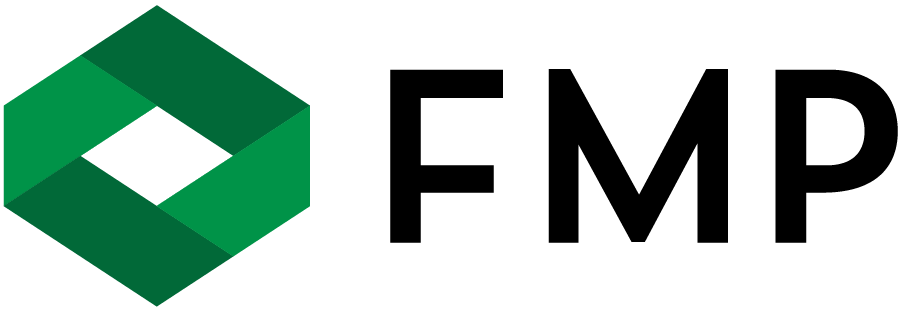by Christian Hudspeth, CFP®
The Secure Act 2.0 law continues to bring sweeping IRA and 401k changes to workers and retirees alike. And plenty of opportunities that could lead you to financial independence sooner.
Since the law went into effect in 2023, Secure Act 2.0 has:
- Deferred taxes longer for IRA owners by raising the age to begin taking Required Minimum Distributions (RMDs) to 73,
- Reduced the RMD penalty for not taking your RMD on time from 50% to 25% of the RMD amount,
- Allowed small businesses and self-employed individuals to open Roth Simple IRAs and Roth SEP IRAs, and
- Enabled businesses to fund retirement plans with matching or non-elective Roth contributions.
The law’s most significant changes are just around the corner in 2024.
Whether you’re an employee, a parent, business owner, or a retiree, we want to show you some ways you can use these Secure Act 2.0 changes to your financial advantage in the years ahead.
1. 529 plan to Roth IRA Rollovers
Who Benefits: Parents saving for their children’s higher education, or high earners with unused 529 plans
Beneficiaries of 529 plans that were opened at least 15 years ago (2009 or earlier) may roll the funds into their own Roth IRA up to the annual contribution limit each year ($6,500 in today’s dollars) for six years until they reach a maximum lifetime limit of $35,000. Contributions that occurred in the last five years (2019 or later) are not eligible to be rolled over.
Here’s an example. John used the 529 plan his parents set up in 2009 to pay for his college several years ago. He hustled and graduated a year early, so he had extra money left in the account and today his 529 plan has investments worth $35,000!
Now John wants to aggressively save for retirement by maxing out his annual Roth IRA contributions. He can begin rollovers of up to $6,500 each year from his 529 plan into his Roth IRA from 2024 through 2029 up to $35,000. Note that 529 rollovers can either “fill up” or “top off” the beneficiary’s Roth IRA contributions up to the annual contribution limit.
Opportunity for parents: The new rule may offer relief and added flexibility for parents looking to fund their children’s future. If they fund a tax-advantaged 529 plan and their child doesn’t end up going to college (the fear some parents have over tying money up in 529 plans), they can still give their adult child a start on retirement through a series of 529-to-Roth IRA rollovers.
Opportunity for high earners:High earners with unused 529 plans now have another way to contribute more into tax-advantaged accounts beyond their employer retirement plans. Individuals that meet the above rules (see John’s story above) can effectively move money into Roth IRA accounts even if they make over the normal Roth IRA income limits ($228,000 adjusted gross income for joint filers and $153,000 for single filers in 2023).
2. Small Business Owners Now Have More Roth Plans Available
Who Benefits: Self-employed individuals/business owners in the highest tax brackets, or small business employees in low tax brackets
Employers and those who are self-employed may open SIMPLE Roth IRAs and SEP Roth IRAs starting in 2024. They may also make after-tax Roth contributions into employee or employee-owner accounts. The employer Roth contributions are immediately vested, grow tax-free, and offer tax-free withdrawals if certain conditions are met.
Opportunity: Self-employed individuals and small business owners that are in the highest tax brackets (think doctors, dentists, lawyers, and consultants) and expect to keep their lifestyle for their lifetime may be well suited for Roth retirement plan contributions. This is because they can lock in today’s historically low tax rates by paying taxes on their money now to avoid taxes on withdrawals in the future at potentially higher tax rates.
3. Small Business Owners Now Have Last-Minute Solo 401k Option Available
Who Benefits: Self-employed and small business owners in all tax brackets with no employees other than their spouse
Entrepreneurs working on their accounting books past December 31st can rest easier knowing they can take advantage of this new solo 401k rule. They may now open a solo 401k as late as the normal tax filing deadline in mid-April, instead of the old solo 401k account opening deadline of December 31st.
Opportunity: Self-employed/business owners can use this rule to get a clear picture of their profit before taxes by April, and may claim a last-minute tax deduction on up to $66,000 per year as of 2023 (or more if their spouse works with them — talk to your financial advisor to see how much you could deduct) depending on their business’ net income. This could lead to thousands of dollars in tax savings and tax-deferred growth.
4. The $1,000 Emergency Fund: Early-withdrawal Penalty Waived from Retirement Accounts
Who Benefits:Employees and self-employed individuals/business owners
Employees may withdraw up to $1,000 from their employer retirement account once per year for “unforeseeable or immediate financial needs relating to personal or family emergency expenses” without having to pay the 10% early withdrawal penalty. The employee must then wait three years to take out another emergency withdrawal unless the original balance was repaid to the retirement account.
Opportunity: You could choose to hold $1,000 more of your emergency fund money in an employee retirement account than you could before without worrying about penalty. That said, you may want to have this portion of your portfolio allocated to avoid stock market risk when you need the money most.
5. New RMD Age Begins
Who benefits: Anyone and everyone with pre-tax retirement accounts. Whether you’re about to turn age 73 or will be in the next fifteen years, this is an important change.
If you’re turning age 73 in 2024: This will be the first year the IRS will have retirees born in the 1950s take taxable RMD withdrawals from pre-tax retirement plans, traditional IRAs, and 401ks/403bs from previous employers. You may wait up until April of 2025 to take your very first RMD, but waiting longer than that will give you a (newly reduced) tax penalty of 25% on the amount of RMD you didn’t withdraw.
For anyone with large 401ks and IRA balances: As your pre-tax retirement funds continue to grow, so will your potential RMDs, creating a potential tax bomb for yourself in the future. That’s because when you reach RMD age, oversized RMD income can add to your other income sources, forcing you to pay higher-than-necessary tax rates and elevated Medicare Part B premiums in the form of income-related monthly adjustments (IRMAA).
Opportunity: Regardless of your age, now is the time to plan. If you’re currently saving for or nearing retirement, work with a skilled financial advisor to schedule well-timed Roth IRA conversions that take advantage of lower tax rates over several years to avoid years of large taxable RMDs later. If you’re at or approaching RMD age, you can minimize income taxes and penalties now by working with an advisor to tax-optimize your portfolio withdrawals and charitable donation strategy.
The Takeaway
Secure Act 2.0 will continue bringing new changes to retirement plans over the next few years, and those who start planning with these new tools (and with a skilled financial advisor) now will be best prepared to reach financial independence sooner and with added peace of mind during their retirement years.
More from FMP Wealth Advisers:
11 Ways Secure Act 2.0 Affects Your 401ks and IRAs, Starting 2023
Is Now the Best Time for a Roth IRA Conversion?
4 Tax-Smart Ways to Donate More and Pay Less
*The information presented here is not specific to any individual’s personal circumstances. FMP Wealth Advisers is not providing investment, tax, legal, or retirement advice or recommendations in this article.
**To the extent that this material concerns tax matters, it is not intended or written to be used, and cannot be used, by a taxpayer for the purpose of avoiding penalties that may be imposed by law. Each taxpayer should seek independent advice from a tax professional based on his or her individual circumstances.
***These materials are provided for general information and educational purposes based upon publicly available information from sources believed to be reliable — we cannot assure the accuracy or completeness of these materials. The information in these materials may change at any time and without notice.



